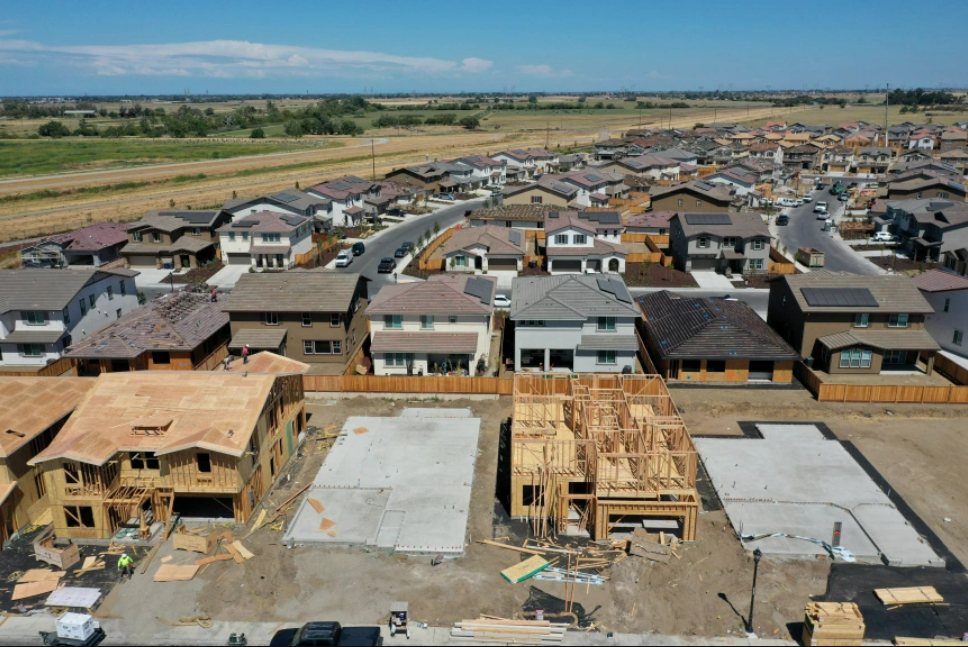Cory Wolbach, community engagement senior associate at SV@Home, a housing advocacy group in Santa Clara County, said pro-housing candidates also performed well in Silicon Valley council races in Palo Alto and Mountain View.
“This election really does give us some optimism that the leadership of our electorate is ready to roll up their sleeves and get to work,” Wolbach said.
By ETHAN VARIAN | evarian@bayareanewsgroup.com | Bay Area News Group
PUBLISHED: November 12
As the Bay Area seeks solutions for an intensifying housing crunch, voters across the region this midterm election largely embraced local ballot measures to build more affordable homes and bolster renter protections.
But suburban voters were split on policies to restrict growth and over city council candidates promising to push back on new development, showing the durability of not-in-my-backyard sentiment in some of the area’s wealthier enclaves.
In Oakland, voters appear likely to approve a massive $850 million bond proposal to fund affordable housing and infrastructure projects. Tax measures in Palo Alto, East Palo Alto, Emeryville, Walnut Creek, Vallejo and Healdsburg also appear likely to pass and raise money in part for homeless services and homes for low- and middle-income residents squeezed by high housing costs.
“The electorate clearly understands the urgency for creating more affordable housing,” said David Garcia, policy director for UC Berkeley’s Terner Center for Housing Innovation.
The only Bay Area housing funding measure to lose was a $650 million bond proposal in Berkeley. It failed to reach the two-thirds majority needed for approval.
Gloria Bruce, executive director of East Bay Housing Organizations, which backed both the Oakland and Berkeley bonds, noted that early returns show Berkeley’s measure still received a solid 56% of the vote. She said proponents are working to understand why the measure ultimately failed but pointed to a competitive campaign in the lead-up to Election Day.
“Berkeley had what Oakland didn’t, which was organized paid opposition, including from some (former) local officials,” Bruce said.
Voters in Berkeley, as well as in Oakland and South San Francisco, did pass measures that will together clear the way for at least 13,000 new affordable homes, though they do not provide funding. The proposals were on the ballot because cities must get voter approval before using public money for affordable housing — the result of a 1950 law with racist origins that voters across the state will choose whether to repeal in 2024.
In Oakland, voters also pushed through a measure to protect school teachers and households with children from most evictions during the academic year. And to the north in Richmond, voters agreed to lower the maximum yearly rate hike for rent-controlled apartments to around 3%.
Francisco Dueñas, executive director of the tenant advocacy group Housing Now California, said the added protections will give tenants needed relief as they feel the pinch of inflation.
“Part of the reason why these (measures) are so popular is because folks are so scared and folks are in such dire need,” Dueñas said.
Housing Now also backed proposed taxes on vacant homes in Berkeley and San Francisco, both of which appear likely to pass. The measures aim to compel property owners — particularly large investor-backed rental companies — to rent or sell their empty units instead of paying the fee.
Some critics have questioned how much housing the taxes could unlock and whether vacant homes are a primary driver of high housing costs. But Dueñas said the policies are necessary to “wrest our homes out of corporate hands,” which he blamed for higher eviction rates.
Meanwhile, tenant and housing advocates in San Francisco were divided over two competing measures to speed up the approval process for new homebuilding. Despite millions of dollars in total campaign spending, both are trailing but remain too close to call.
In the Contra Costa County suburb of Brentwood, voters overwhelmingly approved a measure to change how new housing is approved. But instead of streamlining the process, the measure — which came after a developer proposed senior housing for two local golf courses — will now require a public vote before homes can go on parks and open spaces.
Across the bay in suburban Menlo Park, it was a different story. Residents there shot down a measure that would have required a citywide vote to allow apartments in single-family neighborhoods.
A community group spearheaded the initiative after a local school district announced plans for a 90-unit teacher housing complex in their neighborhood. Suburban voters in the Peninsula and beyond have long resisted denser housing. But a coalition of business groups, environmentalists and racial justice advocates convinced voters the proposal would hamper the project and further patterns of discrimination by keeping affordable housing in lower-income areas.
“It was a huge team effort of a wide variety of voices standing up for teachers and affordable housing and really standing up to the past practices of segregation,” said Evelyn Stivers, executive director of the Housing Leadership Council of San Mateo.
In other affluent cities, housing fights were at the center of city council races.
Cupertino residents, for example, chose between pro-housing candidates and those backed by a “balanced growth” neighborhood group called Better Cupertino. Opponents accused Better Cupertino allies, who currently control the City Council, of stymieing new housing projects and causing widespread dysfunction in city government. Now, early returns show pro-housing candidates should take a majority.
Cory Wolbach, community engagement senior associate at SV@Home, a housing advocacy group in Santa Clara County, said pro-housing candidates also performed well in Silicon Valley council races in Palo Alto and Mountain View.
“This election really does give us some optimism that the leadership of our electorate is ready to roll up their sleeves and get to work,” Wolbach said.
In the Tri-Valley area of the East Bay, candidates who ran on resisting development may end up having more success.
In Livermore, a group hoping to derail an approved affordable housing project spent at least $125,000 backing three candidates who oppose the development. Early returns show one candidate with a comfortable lead, while one is trailing and another race is too close to call. And in Pleasanton, two winning candidates voiced support for joining other cities in a lawsuit over their state-mandated housing goals, which have more than doubled for many jurisdictions.
Councilwoman Julie Testa, who’s on her way to re-election in Pleasanton, said she’s frustrated the state increased those targets without providing the necessary funding to ensure enough affordable housing gets built.
“What the state is mandating are false and unreasonable housing numbers,” Testa said, pointing to a state auditor’s report critical of parts of the state housing process.
Garcia, the housing expert with UC Berkeley, said a fight with the state would likely be a losing battle, noting new penalties for jurisdictions that don’t meet their housing responsibilities.
“There is no appetite for cites and officials who try to skirt state law,” he said.
Clarification: November 14, 2022 An earlier version of this story did not make clear how money from tax measures that appeared likely to pass would be spent. The money would go in part to affordable housing and homeless services.

